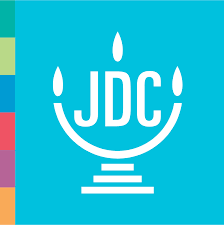COVID 2
Rick Hodes, MD, MACP
JDC-Ethiopia
EthiopianSpines@gmail.com
14 April, 2020
To my Ethiopian colleagues:
I am writing to pass on further Coronavirus information, which might be of help, including Columbia’s recommendations for steroids and the Infectious Disease Society of America (IDSA) treatment suggestions.
I spoke yesterday with 2 friends at Columbia University in New York City. They are being hit particularly hard hit, and yesterday had 600 patients in hospital beds who are often doing OK, but 220 on ventilators. They do have a few open ventilators. They have closed 60 operating rooms and turned them into ICU beds. Their numbers are not increasing, but patients stay on ventilators for several weeks, which is tough on everyone. It is very stressful on both doctors and patients, and disheartening to all that many patients are dying.
At least 400 doctors, nurses and other health workers have died, and that is not counting China.
I have spoken with several doctors on the front lines, evaluating and treating patients, and have more calls later this week. Nobody feels optimistic that any of their treatments are working. Specifically, hydroxychloroquine and azithromycin are not a miracle cure, but they may decrease the progression from early disease to pneumonia. Remdesivir may help somewhat. I was told that the anti-IL6 drug tocilizumab does help temporarily, but then the disease returns. The protocol they use in New York is single-dose, I am trying to find out how the Seattle people are dosing it. All the studies are subject to selection bias, so there is no good data. To my knowledge, no randomized results have been released which have been helpful.
Prof. Neil Schluger, the pulmonary chair at Columbia, who has been to Ethiopia many times and who runs the Bloomberg-funded program to train Ethiopian pulmonary doctors, says that many patients will do OK in hospital without intubation, by using prone position and oxygen, and advises Ethiopians to concentrate on making sure there is enough oxygen.
STEROIDS:
There is a debate about steroids, with the infectious disease people more optimistic about its use than the pulmonary doctors.
Here are the present Columbia University criteria for steroids:
Indications for consideration of use (should meet all three criteriabelow):
1. Patient is in the secondphase of COVID-19infection (symptoms for 7days or more)
2. Progressive respiratoryworsening e.g. increase inoxygen requirement,respiratory rate, or work ofbreathing (sustained over aperiod of 6 to 12 hours)
3. Elevated and/or increasinginflammatory markers (e.g.CRP > 200, Ferritin >2,000, D-dimer > 3, LDH >300)
At least 2 out of 4 labsabove, but use clinicaljudgement. THE TRENDS AREIMPORTANT. Ifinflammatory markers aresignificantly improvingover 24 - 48 hours (even ifstill quite elevated),patients may not needsteroids.If the above markers don’tinitially meet the criteriabut do so over the ensuing24 - 48 hours, steroidinitiation can beconsidered.
DOSING: Methylprednisolone 0.5 mg/kg/dose(max of 40 mg/dose) IV q12h for 5 to 7 daysfollowed by a 1-day taper with half prior dose.Use order panel in EPIC (methylprednisolone(Solu-Medrol) IV *COVID 19) for ordering, whichrounds the dose to available vial sizes.• Duration: 5 - 7 days for most patients
ANTI-COAGULATION:
We know that bedridden patients are prone to venous thrombosis, and COVID-19 disease seems to have more risks attached. It is a highly inflammatory condition, and when measured, levels of ferritin, D-dimer, C-reactive protein and IL-6 are very high.
Consideration must be given to anti-coagulation of patients. There is no standard protocol here, Dr. Max O’Donnell of Columbia University, who has been to Ethiopia many times, told me that he prefers low molecular weight heparin.
Resources for information:
a) Lots of information:
http://stat.cmu.edu/~kass/covid.html
b) Recent scientific information
1) National Academy of Medicine, USA
https://nam.edu/coronavirus-resources/
2) Nature Medicine
Click on “Covid-19 Research in Brief.”
3) Johns Hopkins up-to-date world data
https://coronavirus.jhu.edu/map.html
4) Our World in Data
https://ourworldindata.org/coronavirus
5) Annals of Internal Medicine – all COVID info is available to all
https://annals.org/aim/pages/coronavirus-content
6) American College of Physicians – great resources
Click on “Covid-19: An ACP Physician’s Guide”
7) Latest recommendations of treatment from the IDSA (Infectious Disease Society of America):
https://www.idsociety.org/practice-guideline/covid-19-guideline-treatment-and-management/
c) Intelligent popular press
https://fivethirtyeight.com/science/
d) Specific topics:
Here is an article on the difficulties of modeling:
Here is an article on antiotensinand the coronavirus. Many people take ACE (angiotensin converting enzyme) inhibitors or ARBs (angiotensin receptor blockers) for hypertension or heart failure. There is an important debate whether such meds might be protective or deleterious. There are no recommendations to change treatment of the public or of patients at this time.
https://blogs.sciencemag.org/pipeline/archives/2020/03/17/angiotensin-and-the-coronavirus
Here is an article on inoculum size, not in COVID-19 but in H1N1 flu. Nobody has any idea about inoculum size here but it is important in modeling and social distancing.
They needed a dose of 10 to the 7th(sorry, I don’t know how to type that!) particles to cause influenza in 69% of individuals. Nobody knows the inoculum here.
Asymptomatic Disease:
An article in yesterday’s issue of the New England Journal of Medicine
https://www.nejm.org/doi/full/10.1056/NEJMc2009316
screened 215 pregnant women admitted to 2 NYC hospitals. 4 had COVID symptoms, and all 4 tested positive. Of the 211 asymptomatic women, 29 (14%) tested positive. This indicates that at a given point in time, 29/33 (88%) of women infected with SARS-CoV-2 (the official name) were asymptomatic.
When the Italians tested the entire city of VO (population 3300) after there was Italy’s first Covid death there, they found 3% were infected, and half of those infected were asymptomatic. This was followed by a strict lockdown and quarantine.
Treatment:I am attaching a review from JAMA. Quick summary: nothing has been shown to work.
Narrative summary of treatment options from the IDSA (Infectious Disease Society of America is attached here
I hope this may be useful to you, and to the many dedicated Ethiopian physicians who are working so hard to protect the Ethiopian people.
Many thanks.
Best wishes,
Rick
Rick Hodes, MD, MACP
JDC-Ethiopia
